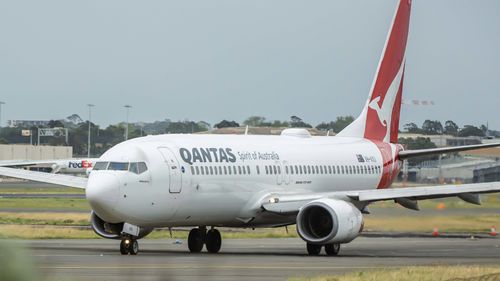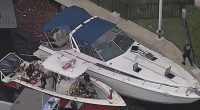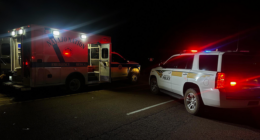Share this @internewscast.com
But investigators found it was likely the captain didn’t know how bad it would be and didn’t tell the cabin crew.

One cabin crew worker broke their ankle in the turbulence and couldn’t get up from the galley floor.
Two others suffered minor injuries.
Two cabin crew and two passengers – an off-duty cabin crew employee and a doctor – were helping the hurt worker in the rear galley as the plane landed.
In a report into what happened, the ATSB found that the captain did not inform the cabin crew about the expected turbulence during descent, likely due to not being aware of its severity.
The report said cabin crew were checking bathrooms and making sure passengers had seatbelts on when the severe turbulence happened, ATSB Director of Transport Safety Dr Stuart Godley said.
It’s standard for the customer service manager to tell crew if the cabin is not secured for landing, he said.
But when the manager told the captain about the injuries, and said some passengers were still standing, the captain didn’t recall receiving any requests for more time to prepare the cabin for landing, the report noted.
The captain twice directed all uninjured cabin crew and passengers to return to their seats.
But Godley said 80 per cent of serious turbulence-related injuries are suffered by cabin crew and the most common time for those is when preparing the cabin for landing.
”The unrestrained cabin crew and passengers were exposed to a higher risk of injury in a landing-based emergency, which in turn would have compromised the cabin crew’s ability to manage any such emergency situation,” Godley said.
“Differing understandings of the state of the cabin increases the risk of delayed responses or misaligned decisionâmaking, which may lead to safety being compromised,” he said.
The 737 was descending on a flight from Sydney to Brisbane on May 4 last year when the incident happened.
An ambulance crew met the worker with the broken ankle.
But the other two workers were not treated and one worked on more flights before realising they had a concussion.
The other was later treated for an injury to their face.
Qantas has now updated its protocols to include contact with the Qantas doctor in the event of significant cabin crew injury or illness, ATSB said.
It has also rolled out more controls to adequately assess the fitness of crew members after turbulence.
Qantas said in a statement: “Following an internal investigation, we promptly expanded our Group-wide medical escalation and post-incident medical assessment processes, ensuring all crew onboard a flight are assessed following an incident, regardless of visible impact.”












